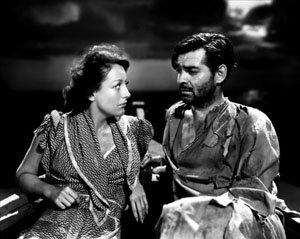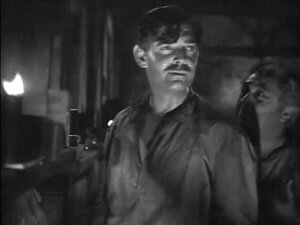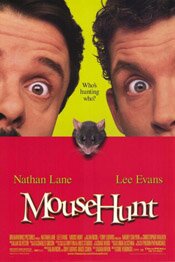 Mousehunt (1997) is a funny movie in both senses of the word. It is funny “ha ha,” and it is funny peculiar.
Mousehunt (1997) is a funny movie in both senses of the word. It is funny “ha ha,” and it is funny peculiar.
For me, it is one of the funniest movies I’ve seen. Ever. I can’t think of many movies, if any, that have made me laugh out loud like this one does.
Other people, however, either like it as I do or absolutely hate it. There is no middle ground. I don’t think I’ve met anyone that felt it was “okay” or “not that good.”
They love it. Or, they hate it.
I suspect it is because the humour is so broad and slapstick. Though there is also some very funny dialogue, it is very visual humour. To an extent, it could be compared to the Three Stooges — at least as far as the visual jokes go.
Oddly, though I love Mousehunt I’ve never been a big fan of the Stooges.
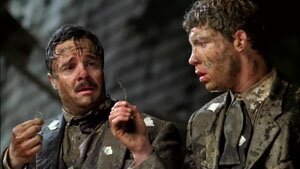
Nathan Lane and Lee Evans are two brothers, Ernie and Lars Smuntz. They inherit a dilapidated house when their father dies along with a string factory that desperately needs modernization. The brothers don’t always agree. One reason is that Lars is simple and kind, for the most part, whereas Ernie is cynical and self-centred.
It’s decided (thanks to Ernie) that they will fix the house up, at least superficially, and then sell it quickly to get whatever they can for it. Then they find out it has historical significance — it’s “the missing Larue,” designed by a famous architect — and worth boatloads of money. They’re thrilled, however …
There is a mouse living in the house and it has other ideas.
As Ernie says later in the movie, after numerous painful attempts to get rid of the mouse, “He’s Hitler with a tail. He’s “The Omen” with whiskers. Even Nostradamus didn’t see him coming!”
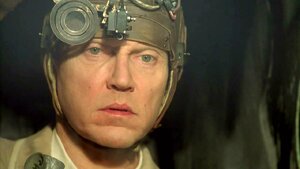
The movie builds from one attempt to another, each more elaborate, each with a more disastrous result. There is one sequence when the brothers bring in ‘Caeser, the Exterminator’ (Christopher Walken) to rid the house of the mouse that is hilarious. Walken gives wonderfully oddball performance as Caesar.
But it’s Lee Evans as Lars that really stands out for me. Tall and gangly, he contorts his body amazingly as he delivers the slapstick humour in a brilliantly visual fashion. Onscreen, he and Nathan Lane make for a tremendous comedy team.
The movie also has a Tim Burton-like look to it; there is a distorted (as in alternately distended and extended), cartoon-ish feel to some of the sets, some camera angles and certain action sequences. The humour is not Tim Burton-like, however. It’s much more direct. It makes no effort at subtlety. That may be why it works so well.
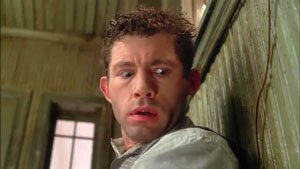
Mousehunt was the first full length movie directed by Gore Verbinski, best known now for his Pirates of the Caribbean movies. He has also directed The Mexican (2001) and The Weather Man (2005). Though quite different movies (especially Weather Man) it strikes me that humour is a key element running through his films and of those he experiments with in the sense that Mousehunt is slapstick, Weather Man satire of a dark variety, and Pirates somewhere between.
Whatever the case, I think it’s safe to say you’ll either love or hate Mousehunt. You have to watch it first, however, to find out which.

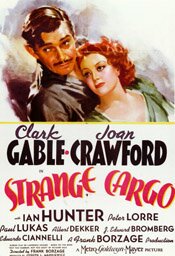 Strange Cargo (1940)
Strange Cargo (1940)